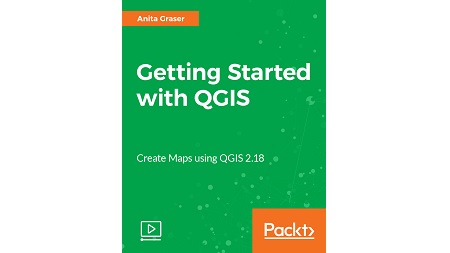
English | MP4 | AVC 1920×1080 | AAC 44KHz 2ch | 4h 17m | 507 MB
The latest guide to using QGIS 2.18 to create great maps and perform geoprocessing tasks with ease
QGIS is a user-friendly open source geographic information system (GIS) that runs on Linux, Unix, Mac OS X, and Windows. The popularity of open source geographic information systems and QGIS in particular has been growing rapidly over the last few years. This video is a practical, hands-on course updated for QGIS 2.14 that provides you with clear, step-by-step exercises to help you apply your GIS knowledge to QGIS.
This video takes you from installing and configuring QGIS to handling spatial data to creating great maps. You will learn how to load and visualize existing spatial data and create data from scratch. You will get to know important plugins, perform common geoprocessing and spatial analysis tasks, and automate them with processing. We will cover how to achieve great cartographic output and print maps. Finally, you will learn how to extend QGIS using Python and even create your own plugin.
This video takes a step-by-step approach to explain the concepts of Geospatial map with the help of real-life examples. Through clear, practical exercises, this video will introduce you to working with QGIS quickly and painlessly.
What You Will Learn
- Install QGIS and get familiar with the user interface
- Load vector and raster data from files, databases, and web services
- Create, visualize, and edit spatial data
- Perform geoprocessing tasks and automate them
- Create advanced cartographic outputs
- Design great print maps
- Expand QGIS using Python
Table of Contents
01 The Course Overview
02 Installing QGIS
03 Running QGIS for the First Time
04 Introducing the QGIS User Interface
05 Loading Vector Data from Files
06 Dealing with Coordinate Reference Systems
07 Loading Raster Files
08 Loading Data from Databases
09 Loading Data from OGC Web Services
10 Styling Raster Layers
11 Styling Vector Layers
12 Loading Background Maps
13 Dealing with Project Files
14 Creating New Vector Layers
15 Working with Feature Selection Tools
16 Editing Vector Geometries
17 Editing Attributes
18 Reprojecting and Converting Vector and Raster Data
19 Joining Tabular Data
20 Checking for Topological Errors and Fixing Them
21 Adding Data to Spatial Databases
22 Analyzing Raster Data
23 Combining Raster and Vector Data
24 Vector and Raster Analysis with Processing
25 More on Vector and Raster Analysis with Processing
26 Leveraging the Power of Spatial Databases
27 Advanced Vector Styling
28 Labeling
29 Designing Print Maps
30 Presenting Your Maps Online
31 Adding Functionality Using Actions
32 Getting to Know the Python Console
33 Creating Custom Geoprocessing Scripts Using Python
34 Developing Your First Plugin
Resolve the captcha to access the links!